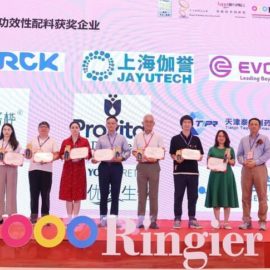In recent years, the unstoppable advancements of artificial intelligence and dermatology have been hard to keep up with. The combination of these two disciplines is bringing along multiple possibilities and opening the door to a new era in terms of cosmetic efficacy.
This alliance between artificial intelligence and dermatology is particularly significant at a time when consumers are more than ready to embrace tech-based cosmetic innovations.
The result is a better alignment between data-informed cosmetic science, which understands cosmetics needs on a deeper level, and consumers, all being able to access more effective treatments.
But how exactly is artificial intelligence being applied to dermatology and cosmetics? Let’s go through the main trends shaping technology and cosmetics today and some examples of cosmetic ingredients engaging with AI-based innovation.
Content
Artificial Intelligence and dermatology: the applications today
- Predictive, personalized dermatology. The use of biometric Big Data is facilitating the path towards generating cosmetic and dermatological products and recommendations that match each person’s specific needs. This includes the possibility to gain unprecedented insights into skin analysis, as well as the incorporation of factors such as lifestyles or skin types. This matches current consumer demands for hyper-personalization in cosmetics, exemplified by research by Mintel, which notes how 72% of Canadian consumers aged 25-34 are interested in hyper-personalized products.
- Dermatologic diagnosis and monitoring. Through the use of AI algorithms, it’s possible to access information for performing accurate dermatologic diagnosis including conditions such as acne or melanoma at early stages. The application of artificial intelligence on dermatology moves on to later stages in certain conditions, allowing professionals to also monitor their development.
- Telemedicine. Artificial intelligence applied to dermatology also opens the door to remote medical consultations.
- Ground-breaking research. Cosmetic and dermatological research is now incorporating artificial intelligence tools and Big Data models that allow scientists to gain unprecedented understanding about issues such as genomic, transcriptomic or proteomic expressions. This, in turn, results in more efficient and precise dermatological and cosmetic treatments, expanding the possibilities of cosmetic science and opening doors to new prospects such as tech beauty.
Artificial intelligence and cosmetology in Provital: the latest opportunities
At Provital, we’ve put innovation at the core of our values, a dedication that translates into many shapes and forms, one of them being the application of the latest artificial intelligence advances.
One of our latest efforts exemplifies this statement: Altheostem™, a trigger for senolysis able to kickstart tailored biological action to remove senescent skin cells with the aim of halting certain processes in aging skin.
Presenting a ground-breaking action thanks to stem cells derived from the petals of Althea rosea, for this ingredient we focused on taking our science-backed claims one step forward.
This is why we developed an AI-enabled methodology that would certify consumers of the well-aging power of our ingredient. As such, Provital used an in vivo testing method able to calculate the Visual Apparent Age of a panel of subjects, using a new and highly reliable Machine Learning system based on Artificial Intelligence.
The system was able to analyze 223,560 images that showed the evolution of a panel of 70 healthy female volunteers aged between 45 and 65, comparing their Visual apparent age before and after using our active ingredient.
The system is able to predict the age of subjects in a controlled environment thanks to the use of an ensemble of different convolutional neural networks (CNNs), which extracts information from each picture thanks to a previous machine training using 55,134 images from 13,617 subjects with ages ranging from 16 to 77 years old.
Then, as source data for our study, we used 207 videos showing the evolution of the subjects during different stages of treatment (D0-D28-D56). These videos were then fed to 3 different models that estimate the age of the subject.
Thanks to this calculation, we were able to estimate a decrease of over 3 years in the Visual Apparent Age of all treated volunteers vs placebo, generating AI-based proof for the well-aging power of Altheostem™ through Artificial Intelligence.
This translates into a pioneering active ingredient that endows brands with the capacity to develop predictive and highly selective facial care, aligning with current consumer demands.
No comments yet
There are no comments on this post yet.





Leave a comment